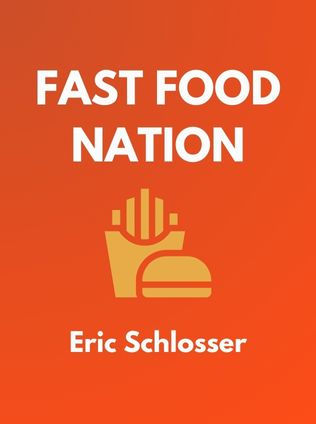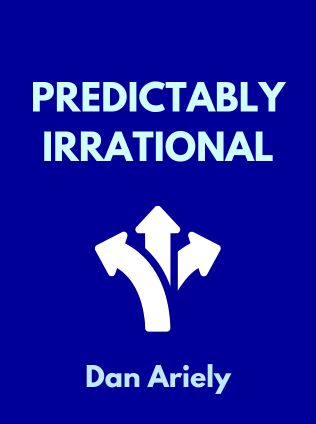
Flip the Funnel
How to Use Existing Customers to Gain New Ones
By Joseph Jaffe
Published 03/2010
About the Author
Joseph Jaffe is a well-known entrepreneur and author in the fields of marketing and customer engagement. With a focus on leveraging technology and innovative strategies to foster customer relationships, Jaffe has become a thought leader in flipping traditional marketing approaches. He is the author of several influential books, including "Flip the Funnel," which challenges the conventional wisdom of marketing and offers a fresh perspective on customer acquisition and retention.
Main Idea
In "Flip the Funnel," Joseph Jaffe argues that the traditional marketing funnel, which prioritizes customer acquisition, is outdated and inefficient. Instead, he advocates for a flipped funnel approach, where businesses focus on enhancing the customer experience and leveraging satisfied customers to drive new customer acquisition. This approach involves acknowledging existing customers, engaging in meaningful dialogues, incentivizing referrals, and creating a self-sustaining ecosystem powered by customer loyalty and word-of-mouth.
Table of Contents
- The Current State of Marketing
- Marketing as It Should Be and Could Be
- How to Get There
The Current State of Marketing
The traditional marketing funnel is now seriously out of whack – it doesn’t work effectively anymore. Why? People aren’t as predictable as most marketers claim. It makes no sense spending millions to create awareness and then much lower amounts of money to progress qualified prospective buyers but that’s what happens all the time. The funnel model was an oversimplification which has passed its use-by date. It’s time to get back to basics and take a clean sheet approach to the best way to acquire and then retain new customers.
Marketing has traditionally been a four- or five-step process:
- Awareness – You advertise to make potential customers aware your product exists and is available. This is expensive but it’s an investment you hope will pay off in later sales.
- Interest – You offer a promise of added value in the customer’s personal or business life. You have a value proposition which details what the customer will pay and what they will get out of it which is overwhelmingly in your favor.
- Desire – You have a hook which answers the consumer’s unstated question: “What’s in it for me if I buy?” When people respond to the hook, they are ready to make the financial commitment required.
- Action – You have a hopefully irresistible promotion which encourages the prospective customer to buy right now rather than at some point in the future.
- Satisfaction – You hope and ultimately assume your customers are satisfied with their purchase and appreciate the added value it delivers.
The only problem is this conventional marketing approach has become outdated or just plain broken. This conclusion is based on several factors:
- The traditional model assumes people are linear and predictable in their behavior. That does sound nice in theory but it is obviously false.
- The amount of money spent at the top of the funnel (generating awareness and interest) almost always outweighs the amount of money spent at the bottom of the funnel. Wouldn’t it be better to spend more money on interacting with qualified prospective buyers who have shown they have a desire to purchase?
- The sales funnel is an oversimplification. It doesn’t allow for the research many people do before they buy or how offering a free trial or some other kind of sampling can sway a purchase decision.
- The sales funnel is much too linear. People will act the way they want to act rather than rigidly sticking to some sequence we arbitrarily design for them.
- The sales funnel says nothing about retention or repeat business. It focuses solely on a one-off initial purchase transaction and how to get there.
- The marketing funnel produces customers but then does nothing with them. It is incomplete. It suggests you should expend all your time and resources getting strangers to buy rather than encouraging existing customers to buy more.
If there is one thing the most recent recession has taught everyone, it is that there are only four simple metrics which affect whether a business keeps its doors open or goes under:
- Getting more people to buy.
- Getting existing customers to buy more often.
- Getting existing customers to spend more on your products.
- Getting existing customers to recommend you to their friends.
The lion’s share of most advertising and marketing expenditure is allocated to point #1 alone. To illustrate, try and develop a chart like this for your own business:
Category: How much business you generated from this category in the past year and how much money you spent in the past year on marketing initiatives in this category:
- New or first-time customers
- Repeat customers (More frequency)
- Bigger basket size (Larger orders)
- Influence and word-of-mouth
On completing this exercise, many companies have found they allocate the majority of their marketing expenditure to seeking first-time or new customers alone but the other categories also generate a substantial amount of business turnover. That begs a few thought-provoking questions:
- What would happen if your marketing spend could reflect where your business comes from – if you spent more on what works and less on what doesn’t? Wouldn’t that be a good thing to try and achieve?
- What would be the result if you took some of the money which now gets used in trying to generate first-time customers and instead do amazing things for your existing customers? Would that increase their repeat purchases?
- What if you offered price incentives – the more people buy from you, the lower your prices are? Would that make repeat purchases even more attractive?
All of these questions focus attention on one underlying business concept: customer churn. Many companies try and balance their books by having new customers coming in counteract those who go out. That creates the illusion all is well. Certain levels of customer churn are deemed to be acceptable while others are not. Perhaps it’s also time to re-think this business gem.
So why do customers switch from using your product or service to that of a competitor? Unfortunately, many companies make this easy by providing customers with five reasons:
Sign up for FREE and get access to 1,400+ books summaries.
You May Also Like
Rich Dad Poor Dad
What the Rich Teach Their Kids About Money - That the Poor and Middle Class Do Not!
By Robert T. KiyosakiFreakonomics
A Rogue Economist Explores the Hidden Side of Everything
By Steven D. Levitt and Stephen J. DubnerThe Lean Startup
How Today's Entrepreneurs Use Continuous Innovation to Create Radically Successful Businesses
By Eric RiesFactfulness
Ten Reasons We're Wrong About the World – and Why Things Are Better Than You Think
By Hans RoslingThe Ride of a Lifetime
Lessons Learned from 15 Years as CEO of the Walt Disney Company
By Robert Iger



















